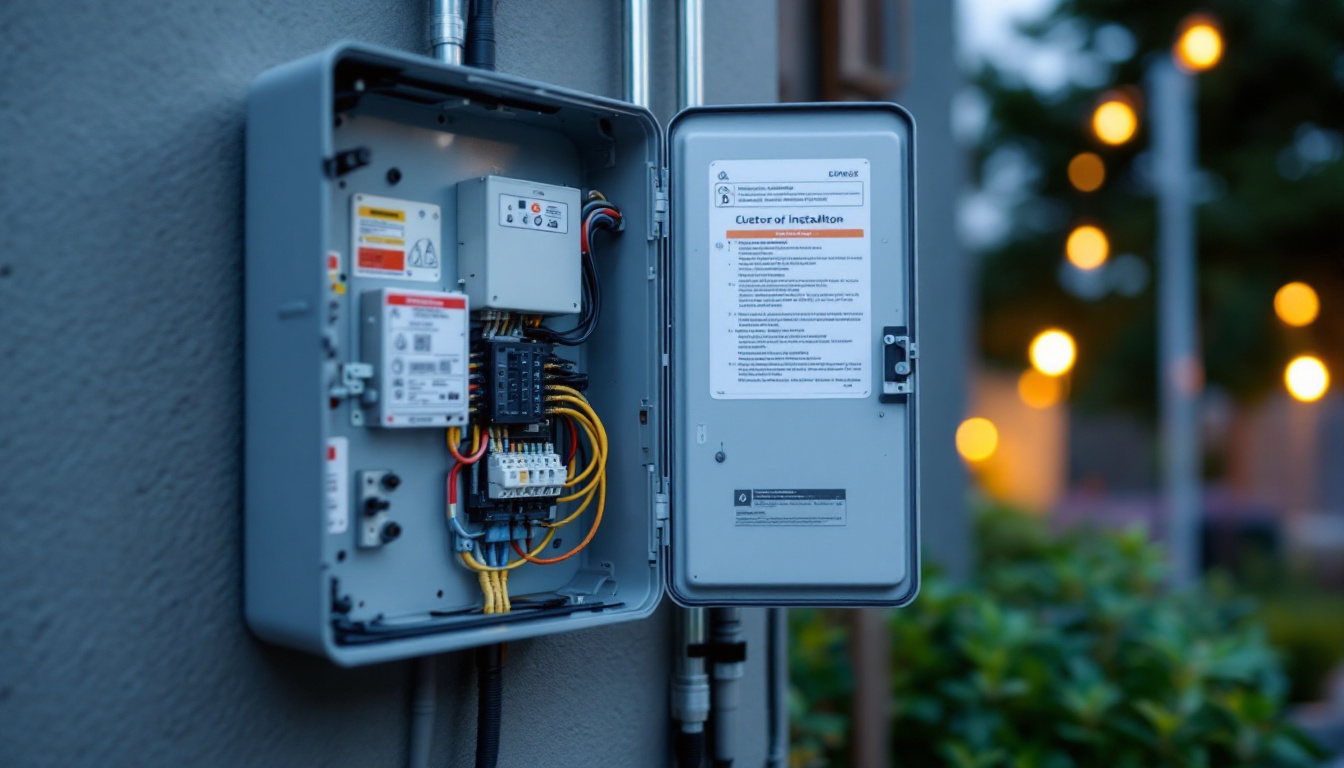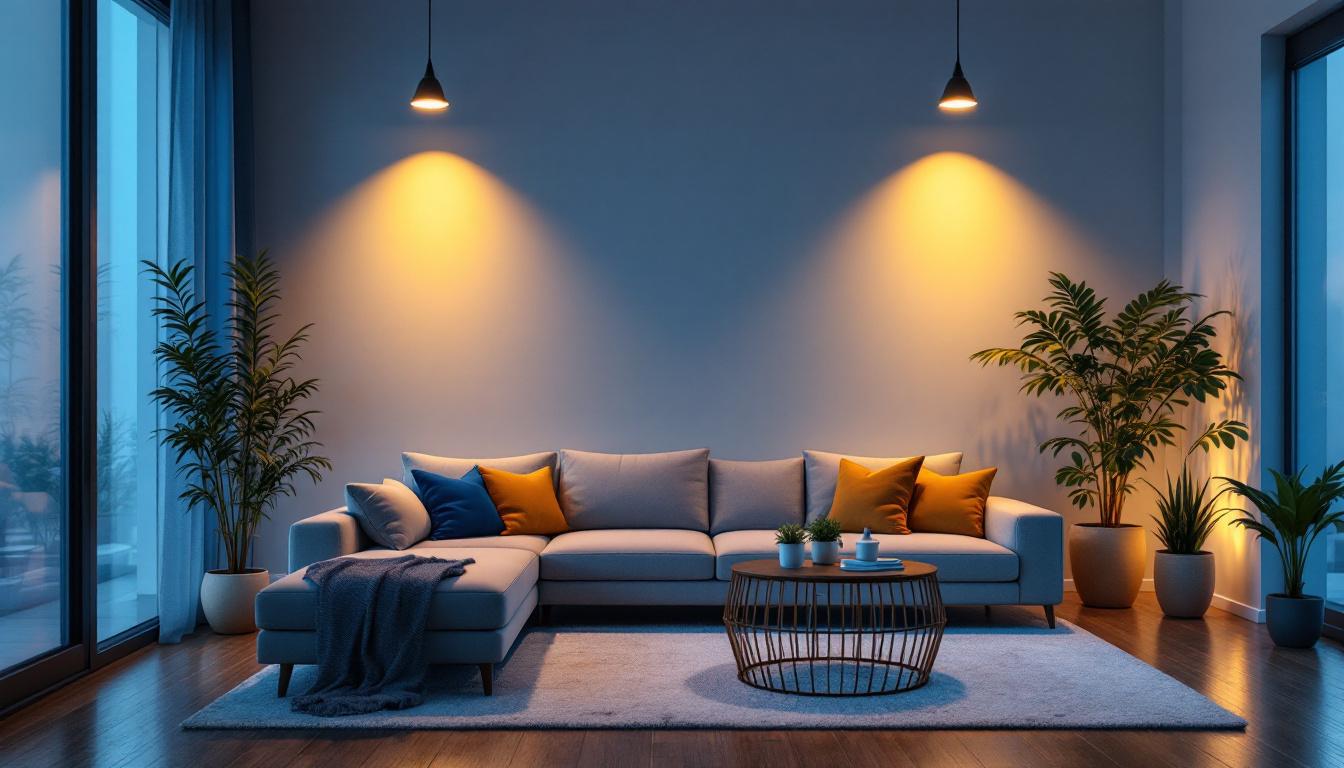
Lighting contractors play a crucial role in the construction and renovation sectors, ensuring that spaces are not only illuminated but also aesthetically pleasing and energy-efficient. As the demand for sustainable and efficient lighting solutions grows, contractors must adapt to new technologies and trends in the industry. This article explores how lighting fixtures and innovative solutions can boost efficiency for lighting contractors, ultimately leading to enhanced project outcomes and client satisfaction.
In an era where energy conservation and sustainability are paramount, the importance of efficient lighting solutions cannot be overstated. Lighting contractors are at the forefront of this transition, tasked with implementing solutions that not only meet client expectations but also adhere to regulatory standards. Efficient lighting reduces energy consumption, lowers utility costs, and minimizes the carbon footprint, making it an essential consideration for any project.
energy-efficient lighting encompasses various technologies, including LED, CFL, and advanced lighting controls. Each of these options offers unique benefits that can significantly reduce energy usage. For instance, LED lights consume up to 75% less energy than traditional incandescent bulbs and have a longer lifespan, making them a cost-effective choice in the long run.
Moreover, integrating smart lighting controls allows for further optimization. These systems can adjust lighting based on occupancy, time of day, or natural light availability, ensuring that energy is used only when necessary. By understanding and utilizing these technologies, lighting contractors can provide clients with solutions that are both effective and sustainable. Additionally, the aesthetic flexibility of modern lighting solutions, such as tunable white lighting and color-changing LEDs, enables designers to create dynamic environments that enhance the ambiance of any space, from residential homes to commercial buildings.
As energy efficiency becomes a focal point in building codes and regulations, lighting contractors must stay informed about compliance requirements. Many regions have implemented strict guidelines that mandate the use of energy-efficient lighting solutions in new constructions and renovations. Failure to comply can result in costly penalties and project delays.
On the other hand, many governments and organizations offer incentives for projects that prioritize energy efficiency. These can include tax rebates, grants, or subsidies, which can significantly offset project costs. By leveraging these incentives, contractors can not only enhance their service offerings but also improve their bottom line. Furthermore, the growing emphasis on green building certifications, such as LEED (Leadership in Energy and Environmental Design), means that contractors who specialize in energy-efficient lighting can position themselves as leaders in the industry, attracting clients who are committed to sustainable practices and environmentally responsible design.
Innovation is a driving force in the lighting industry, with new technologies emerging to enhance efficiency and functionality. Staying abreast of these developments is crucial for lighting contractors looking to maintain a competitive edge.
Smart lighting systems represent a significant advancement in lighting technology. These systems allow for remote control and automation, enabling users to manage their lighting environments with ease. Features such as dimming, color temperature adjustment, and scheduling can be controlled through mobile applications or centralized systems, providing unparalleled convenience.
For lighting contractors, incorporating smart lighting into projects can elevate the client experience. Not only do these systems offer energy savings, but they also enhance the overall aesthetic and functionality of a space. Clients are increasingly seeking out these solutions, making it essential for contractors to be well-versed in their installation and integration. Furthermore, the integration of smart lighting with other smart home technologies, such as security systems and HVAC, allows for a seamless user experience that can significantly increase the value of a property. As more homeowners adopt IoT devices, the demand for interconnected lighting solutions will likely surge, presenting a lucrative opportunity for contractors who can navigate this evolving landscape.
human-centric lighting focuses on the impact of light on human health and well-being. This approach considers factors such as circadian rhythms and the psychological effects of different lighting conditions. By utilizing tunable white or color-changing LEDs, contractors can create environments that promote productivity, comfort, and overall well-being.
Implementing human-centric lighting solutions not only meets the needs of clients but also positions contractors as leaders in a growing niche. As awareness of the importance of lighting on health increases, more clients will seek out these specialized solutions, providing contractors with new opportunities for growth. Additionally, research has shown that appropriate lighting can significantly enhance mood and cognitive function, making it particularly valuable in settings such as offices, schools, and healthcare facilities. By educating clients on the benefits of human-centric lighting, contractors can foster stronger relationships and encourage repeat business, as satisfied clients are more likely to recommend these innovative solutions to others. As the conversation around wellness continues to evolve, the role of lighting in creating supportive environments will only become more pronounced, making it a critical area for contractors to explore and master.
Effective lighting design is a critical component of any project, requiring a balance between aesthetics, functionality, and efficiency. Lighting contractors must consider various factors to ensure that their designs meet the needs of both the space and its occupants.
Understanding the specific needs and preferences of clients is essential for successful lighting design. This involves engaging in thorough consultations to determine the intended use of the space, desired ambiance, and any specific requirements. By taking the time to assess these factors, contractors can create tailored lighting solutions that enhance the overall experience.
Additionally, contractors should consider the long-term vision of the space. Will the lighting design remain relevant as the needs of the occupants evolve? Flexibility and adaptability in design can ensure that the lighting remains effective and appealing over time.
Layered lighting techniques involve the strategic use of different types of lighting—ambient, task, and accent—to create a well-balanced and functional environment. Ambient lighting provides general illumination, task lighting focuses on specific areas for activities, and accent lighting highlights architectural features or artwork.
By employing layered lighting, contractors can enhance the visual appeal of a space while ensuring that it meets the practical needs of its occupants. This approach not only improves functionality but also allows for greater creativity in design, enabling contractors to showcase their expertise and innovation.
While the opportunities in the lighting industry are vast, contractors also face several challenges that can impact their efficiency and effectiveness. Understanding these challenges is crucial for developing strategies to overcome them.
Supply chain disruptions can significantly affect the availability of lighting fixtures and components. Delays in shipping or shortages of specific products can lead to project delays and increased costs. Contractors must develop strong relationships with suppliers and stay informed about market trends to mitigate these risks.
Additionally, exploring alternative suppliers or local manufacturers can provide contractors with more flexibility and reliability. By diversifying their supply chains, contractors can better manage potential disruptions and ensure that projects stay on track.
The rapid pace of technological advancement in the lighting industry can be daunting for contractors. New products, systems, and regulations are continually emerging, making it essential for contractors to stay informed and adapt to changes. Continuous education and training are vital for ensuring that contractors remain competitive and knowledgeable about the latest trends and technologies.
Participating in industry workshops, webinars, and trade shows can provide valuable insights and networking opportunities. By investing in professional development, contractors can enhance their skills and knowledge, ultimately benefiting their clients and projects.
In a competitive market, effective marketing strategies are essential for lighting contractors to attract and retain clients. Building a strong brand presence and showcasing expertise can set contractors apart from their competitors.
In today’s digital age, a robust online presence is crucial for any business. Lighting contractors should invest in a professional website that highlights their services, showcases completed projects, and includes client testimonials. Search engine optimization (SEO) techniques can help improve visibility and attract potential clients searching for lighting solutions.
Social media platforms also offer valuable opportunities for engagement and promotion. Sharing project updates, design tips, and industry news can help contractors connect with their audience and establish themselves as thought leaders in the field.
Building relationships within the industry can lead to valuable referrals and collaborations. Networking with architects, interior designers, and builders can provide contractors with access to new projects and clients. Attending industry events and joining professional organizations can facilitate these connections and enhance visibility.
Forming partnerships with complementary businesses, such as electrical contractors or home automation specialists, can also create mutually beneficial opportunities. By working together, contractors can offer comprehensive solutions that meet the diverse needs of clients.
As the lighting industry continues to evolve, lighting contractors must adapt to new technologies, design trends, and market demands. By focusing on efficiency, innovation, and client satisfaction, contractors can enhance their service offerings and achieve greater success in their projects.
Embracing energy-efficient solutions, staying informed about industry advancements, and developing effective marketing strategies are essential steps for contractors looking to thrive in a competitive landscape. By prioritizing these elements, lighting contractors can not only boost their efficiency but also contribute to a more sustainable and illuminated future.
Ready to elevate your lighting projects with efficiency and innovation? Look no further than LumenWholesale, where we provide lighting contractors with high-quality, spec-grade lighting products at unbeatable wholesale prices. Say goodbye to local distributor markups and hello to our extensive selection that meets the highest industry standards. With free shipping on bulk orders, you can trust that you’re getting premium lighting at the best value — all without hidden fees or compromises. Enhance your service offerings and client satisfaction today. Visit LumenWholesale for Wholesale Lighting at the Best Value and make the smart choice for your lighting needs.

Discover the ultimate checklist for lighting professionals to ensure safe and efficient installation of electrical boxes outdoors.

Explore how LED canned lighting revolutionizes energy efficiency in homes and businesses.

Discover essential insights for lighting contractors on hazardous location lighting.

Discover the often-overlooked aspects of T12 lighting that contractors miss.